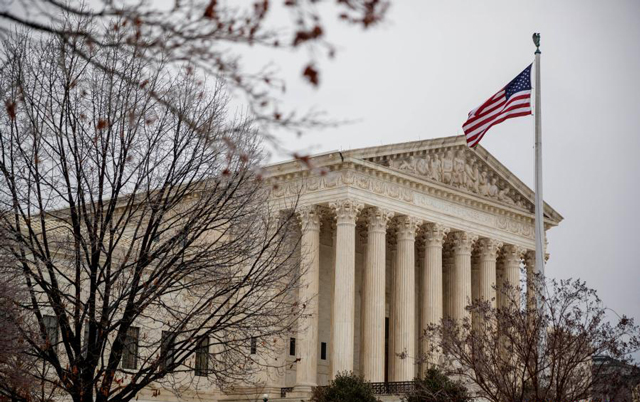
Washington, U.S. | Xinhua | The U.S. Supreme Court entered a summer recess on Thursday after concluding a term filled with consequential rulings and a sworn-in ceremony for its first African American female justice.
The Supreme Court — where conservatives have a 6-3 advantage over the liberal bloc — on Thursday curbed the U.S. Environmental Protection Agency’s ability to regulate carbon emissions from power plants, dealing a significant blow to the White House’s efforts to address climate change.
U.S. President Joe Biden responded in a statement, calling the ruling “another devastating decision that aims to take our country backwards” and “risks damaging our nation’s ability to keep our air clean and combat climate change.”
“We cannot and will not ignore the danger to public health and existential threat the climate crisis poses,” Biden said. “The science confirms what we all see with our own eyes — the wildfires, droughts, extreme heat, and intense storms are endangering our lives and livelihoods.”
The United States is historically responsible for more greenhouse gas emissions than any other country.
Also on Thursday, the Supreme Court sided with the Biden administration in its attempts to terminate what has been called the “Remain in Mexico” policy that requires U.S. asylum-seekers at the southern border to wait in Mexico while their applications are processed.
The 5-4 decision ruled that the Biden administration did not violate federal immigration law when it sought to revoke the policy that originated under the previous administration, under which more than 70,000 asylum-seekers were reportedly returned from the United States to Mexico.
Shortly after the pair of rulings were released, Ketanji Brown Jackson was sworn in to formally become an associate justice of the Supreme Court, making her the country’s first African American woman to serve in that role.
Biden nominated Jackson, 51, to succeed 83-year-old Associate Justice Stephen Breyer in late February. It was one of Biden’s major promises to fill a potential Supreme Court vacancy with an African American woman. Jackson was confirmed by the Senate in April.
The Supreme Court is the final appellate court of the U.S. judicial system, with the power to review and overturn lower court decisions and is generally the final interpreter of federal law, including the country’s constitution.
Since the Supreme Court was established in the United States in 1789, 116 justices have been confirmed to the bench. Of them, 108 were white men, two were black men and only six were women, including Jackson. The justices have life tenure and can serve until they die, resign, retire or are impeached and removed from office.
Legal watchers believe Jackson is expected to vote similarly to her predecessor Breyer, and her ascension won’t change the Supreme Court’s ideological tilt but is likely to change its dynamic.
Last week, the U.S. Supreme Court overturned Roe v. Wade and eliminated a constitutional protection to abortion rights, in a bombshell move that has further divided the nation.
Biden said on Thursday while in Spain for a NATO summit that the U.S. Senate should carve out an exception to the 60-vote filibuster to codify abortion rights in the wake of the Supreme Court striking down Roe v. Wade.
“The most important thing to be clear about is I believe we have to codify Roe v. Wade in the law, and the way to do that is to make sure the Congress votes to do that,” Biden told reporters at a press conference. “And if the filibuster gets in the way, it’s like voting rights, it should be we provide an exception for this, requiring an exception to the filibuster for this action to deal with the Supreme Court decision.”
The Senate tradition of unlimited debate has allowed for the use of the filibuster, “a loosely defined term for action designed to prolong debate and delay or prevent a vote on a bill, resolution, amendment, or other debatable question,” according to the chamber.
Before 1917, the Senate rules did not provide a way to end debate and force a vote on a measure. That year, the Senate adopted a rule to allow a two-thirds majority to end a filibuster, a procedure known as “cloture.”
In 1975 the Senate reduced the number of votes required for cloture from two-thirds of senators voting to three-fifths of all senators, or 60 of the 100-member Senate. Currently, Democrats only have 50 senators, and most votes are passed along party lines.
Senate Republican Leader Mitch McConnell issued a statement in response to Biden’s suggestion, alleging that “attacking a core American institution like the Supreme Court from the world stage is below the dignity of the President.”
“The President launched this inappropriate attack when he was asked about whether or not we are on the right track as a country,” McConnell noted. “The President needs to take a look in the mirror. The Supreme Court isn’t responsible for inflation, high gas prices, crime in the streets or chaos at the border. He is. No amount of blame shifting on the global stage will change that.”
 The Independent Uganda: You get the Truth we Pay the Price
The Independent Uganda: You get the Truth we Pay the Price


